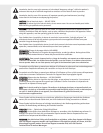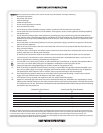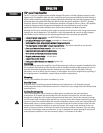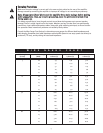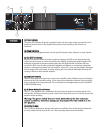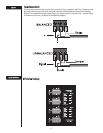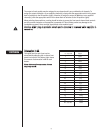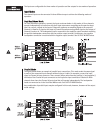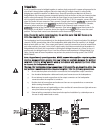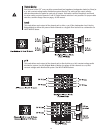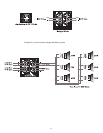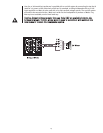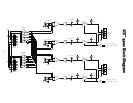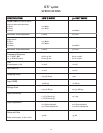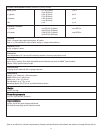
10
MMOODDEE
CCOONNFFIIGGUURRAATTIIOONNSS
The inputs are configurable for three modes of operation and the outputs for two modes of operation.
IInnppuutt MMooddeess
The channel inputs can be connected in three different ways to achieve the following modes of
operation.
DDuuaall--DDuuaall MMoonnoo MMooddee
For Dual-Dual Mono operation‚ connect the inputs as shown below. In this mode‚ all four channels
operate independently of each other with their input attenuators controlling each respective input
level. As a result‚ a signal at the input of Channel A produces an amplified signal at the output of
Channel A. Likewise‚ a signal at the input of Channel B produces an amplified signal at the output of
Channel B‚ and so on. The loudspeaker load is connected to the amplifier output terminals matching
the positive loudspeaker connection with the positive output terminal. Furthermore‚ the negative
loudspeaker connection is matched with the negative output terminal. See OUTPUT MODES below.
PPaarraalllleell MMooddee
The figure below shows an example of parallel input connections. This mode sends the same signal
to each of the connected input channels without using a Y-cable. For example‚ connect the input
signal to Channel A input connector. Then‚ connect jumper wires from the positive (+) and negative (-)
terminals of the Channel A input connectors to the respective input terminals of Channel B. Both
channels then share the Channel A input signal but will operate independently. The loudspeaker
loads are connected as in the Dual-Dual Mono mode. See OUTPUT MODES below.
Any combination of parallel inputs may be configured in this mode‚ however‚ be aware of the output
mode settings.



